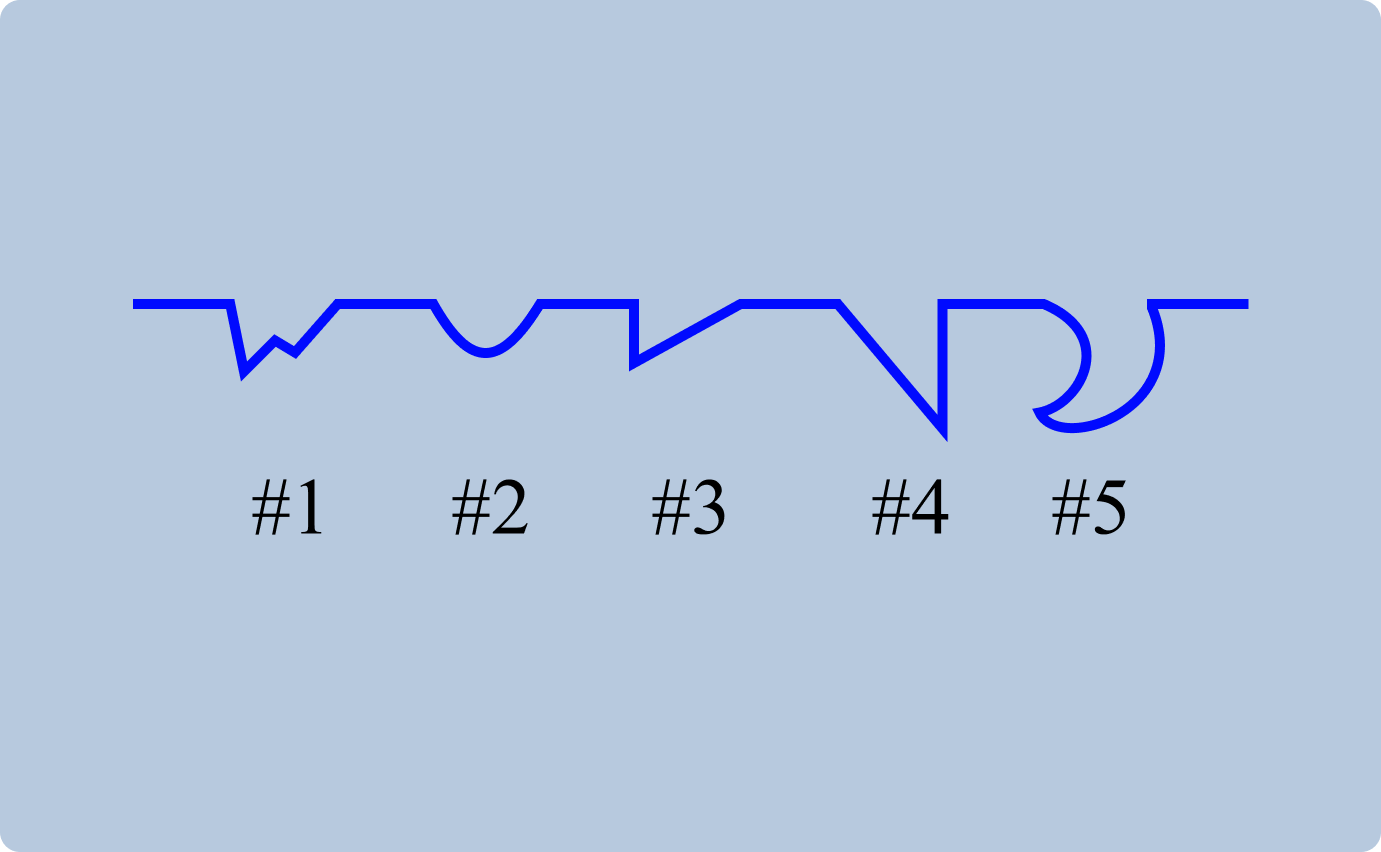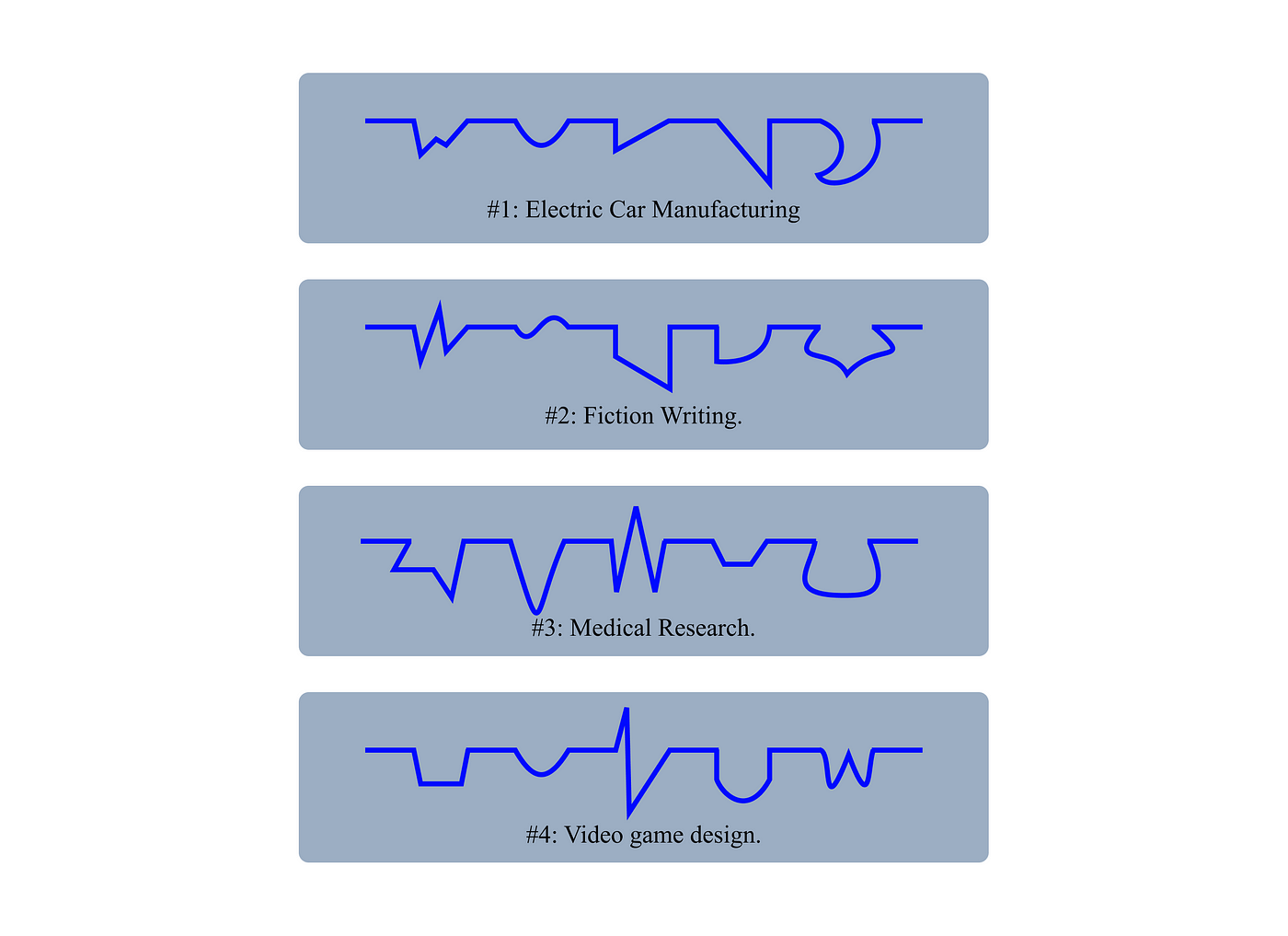- Antifragile Productivity
- Posts
- Significantly Improve the Returns of Your Efforts Using This Method
Significantly Improve the Returns of Your Efforts Using This Method

Before discovering Tesla, Elon tried AC Propulsion’s prototype electric car — the tZero. He was blown away by it.
He immediately told the founders, Tom Gage and Alan Cocconi, “You have to turn this into a real product. That could really change the world.”
But Gage, the company’s then president, was hesitant to commercialize their product and instead wanted to build a cheaper, boxier car to target the general public.
However, this strategy didn’t align with market behavior.
Even with reduced costs, an initial version of an electric car would cost at least $70,000.
Electric cars were a new technology, so trust hadn’t been established yet.
It was unlikely that middle-class consumers would gamble their hard-earned money on a new, still-expensive type of car.
It made no sense to Elon. “Nobody is going to pay anywhere near that for something that looks like crap,” he argued. For weeks Elon kept asking them to make a fancy roadster. “Everyone thinks electric cars suck, but you can show that they don’t,” he insisted. But Gage was adamant.
Hence, Elon decided against investing. When it was clear that Elon wouldn’t invest in AC Propulsion, Gage told Martin Eberhard (Tesla’s co-founder) to contact him. “I’m giving up on Elon. You should give him a call.”
In an email to Elon, Eberhard wrote, “I believe that you have driven AC Propulsion’s tZero car. If so, you already know that a high-performance electric car can be made. We would like to convince you that we can do so profitably.”
Elon replied, “Sure.”
Soon, Elon met with Tesla founders — Martin Eberhard and Marc Tarpenning.
They planned to build a high-end open-body two-seat roadster for the rich, and later reduce costs to target the masses.
Their approach aligned with market behavior.
Rich people are attracted to new, unique, and expensive stuff because they can afford the risk, and because it makes them look even richer.
And the middle class aspires to buy what the rich have because it makes them feel richer.
Their car was as impressive as AC Propulsion’s, and their strategy appealed to Elon. And hence, Elon decided to finance an initial round of $6.4 million.
In the following years, Tesla faced many challenges, but fast forward to today:
Almost no one has heard of AC Propulsion.
However, with an insane market cap of over $700 billion, Tesla is leading the market by a wide margin. For reference, Toyota is 2nd at around $250 billion (as of July 2024).
What’s noteworthy here is even though AC Propulsion built an extraordinary car just like Tesla, both companies experienced drastically different outcomes.
The lesson?
Not all effort produces equal results. To maximize the impact your effort creates, it must align with how things function.
This is The Alignment Theory, and you can use it to improve the quality of your work and boost the ROI of your effort no matter what field you’re in.
Let’s understand it better.
The Alignment Theory
The functioning of any field is incredibly complicated and nuanced, but for the sake of simplicity and better understanding, let’s represent the functioning of any field with a line that has five variable notches.

All visuals were created by the Author on Figma.
The shapes, sizes, and order of these notches vary between fields representing their unique functional specifics. Different fields and even subfields would then have unique patterns.

Now, consider that:
Effort = the total quantity of work put in.
Alignment = how well that effort aligns with the specifics of that field. (quality of effort)
Since results = Quantity x Quality:
Impact = Effort x Alignment
With this understanding, let’s examine two scenarios.
Scenario 1:
Effort = 100 hours.
Alignment = 20%.
Therefore, Impact = 100 x 20 = 20 units.

Scenario 2:
Effort = 60 hours
Alignment = 80%
Therefore, Impact = 60 x 80% = 48 units.

Notice that even with lesser effort (60% of scenario 1), the eventual impact in scenario 2 is significantly higher due to better alignment.
This seems super-obvious in theory but even the smartest individuals often fail to align their efforts effectively.
The founders of AC Propulsion were geniuses. They built an extraordinary car and had the chance to receive investment from Elon. Under his direction, they could have become the largest car manufacturer in the world.
However, they left a lot of impact on the table because their strategy didn’t align with the market, and they were unwilling to align it even after being prodded repeatedly by Elon.
To improve the returns of my effort I try to align my efforts effectively in everything I do by studying how the field works. For example:
I moved from evening cardio to fasted cardio because fasted cardio improves insulin sensitivity.
I used to eat hazelnut brownies once a week any time of the day. But now, I wait to eat them after hard workouts because the glycemic response to sugar improves significantly after a workout.
I moved from 3 sets of 6 reps each at 225lbs parallel squats to 3 sets of 6 reps each at 210lbs deep full-range squats because hypertrophy correlates with tension in the stretched position during a rep.
As a writer, I moved from [words only] to [words + visuals] as visuals are often easier to understand.
I could go on, but you get the point. Effort matters, but effectively aligning that effort is also important.
When was the last time you assessed your strategies?
You’re working hard. Sure. But is all that effort converting into impact, or is your approach misaligned, leaving potential gains on the table?
Let’s discuss a practical framework that ensures lifelong intentional alignment of your effort to ensure continuous improvement in your work quality.
How to Implement
#1: Create Intent: Assign 1–2 weekly study hours
For instance, you could say: “I’ll spend 1 hour studying my craft every Sunday, forever.” It’s like scheduling a weekly standing appointment with yourself to improve your work quality.
#2: Study your craft: Derive functioning insights
Use these hours to study your craft and understand your field’s functional nuances. In each study session, try finding at least one functioning insight that explains how something works.
#3: Align: Convert into an actionable aligning task
Once you discover a functioning insight, convert it into an actionable insight — something concrete you can apply the next time you work. And then, implement it.
Let’s understand this with an example.
If you’re a businessman:
Spend 1–2 hours per week studying business-related topics. Example: “The psychology of consumer buying.”
Derive functioning insights. Example: “Trust plays a significant role in buying.”
Convert into aligning task: Example: “I should start a referral program because potential new customers will trust personal recommendations from existing customers more than advertising.”
Impact: You repurpose the already-built trust with existing customers to gain new customers. Research even shows that referral leads have a 30% higher conversion rate than leads from other channels.
Done week after week, all of this alignment will add up and lead to relatively much higher gains or impact for the same amount of effort. What this alignment looks like is unique for the field you’re in, so it’s up to you to figure out the details. Nonetheless, if you’re intentional about doing it every week, the quality of your work will improve. Period.
If you want to work 1-on-1 with me to transform your productivity, book a call here.